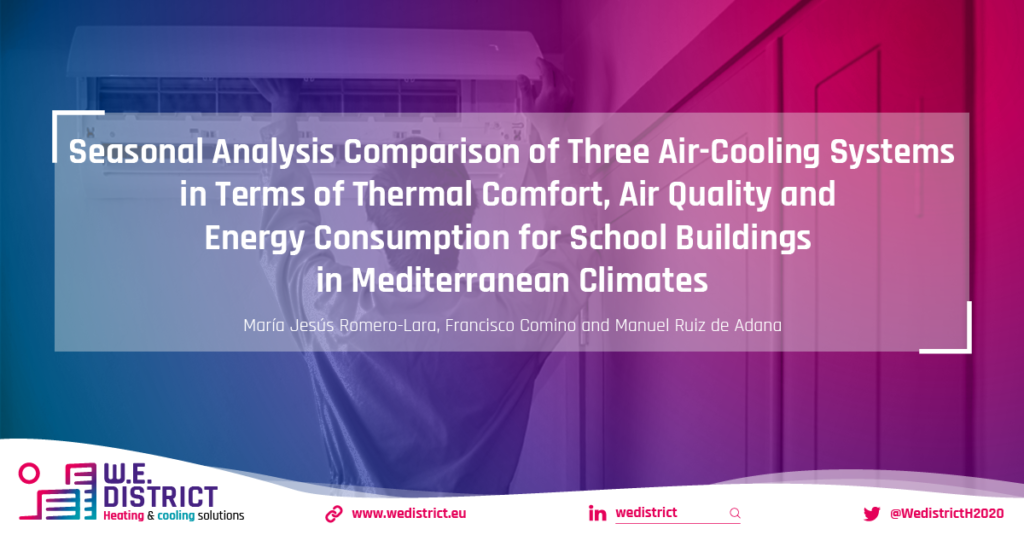Seasonal Analysis Comparison of Three Air-Cooling Systems in Terms of Thermal Comfort, Air Quality and Energy Consumption for School Buildings in Mediterranean Climates
Efficient air-cooling systems for hot climatic conditions, such as Southern Europe, are required in the context of nearly Zero Energy Buildings, nZEB.
Innovative air-cooling systems such as regenerative indirect evaporative coolers, RIEC and desiccant regenerative indirect evaporative coolers, DRIEC, can be considered an interesting alternative to direct expansion air-cooling systems, DX.
The main aim of the present work was to evaluate the seasonal performance of three air-cooling systems in terms of air quality, thermal comfort and energy consumption in a standard classroom.
Several annual energy simulations were carried out to evaluate these indexes for four different climate zones in the Mediterranean area. The simulations were carried out with empirically validated models.
The results showed that DRIEC and DX improved by 29.8% and 14.6% over RIEC regarding thermal comfort, for the warmest climatic conditions, Lampedusa and Seville. However, DX showed an energy consumption three and four times higher than DRIEC for these climatic conditions, respectively. RIEC provided the highest percentage of hours with favorable indoor air quality for all climate zones, between 46.3% and 67.5%.
Therefore, the air-cooling systems DRIEC and RIEC have a significant potential to reduce energy consumption, achieving the user’s thermal comfort and improving indoor air quality.
